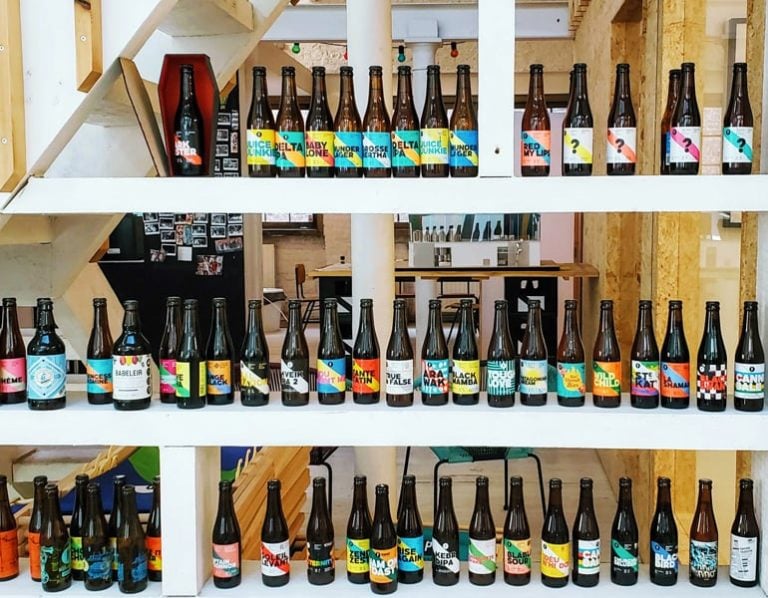Brauerei C & A Veltins Debuts in America
It has become increasingly apparent that the almighty lager has been overlooked in the world…

It has become increasingly apparent that the almighty lager has been overlooked in the world of craft beer. Perhaps it’s a subconscious desire to steer clear of the big boys’ turf, or just the fact that it’s a nuanced and technically challenging style, but the craft lager game in America is sparse. So who’s going to fill the void? Those who pioneered the art form.
Traditional German brewers with centuries of experience are sending help to America in the form of subtle, distinct lagers. One such brewery, Brauerei C & A Veltins, is leading the charge by bringing its unfiltered Grevensteiner stateside, along with its nearly 200 years of tradition.
The operation that would become Veltins began in 1824 as a small guesthouse brewery in the West German city of Meschede-Grevenstein, supplying Reinheitsgebot-worthy ales for the locals. It remained a local brewery for its first 30 years until burgeoning beer connoisseur Clemens Veltins, son of the town mayor, went on a six-year beer vision quest, including a journey to the American beer stronghold of Milwaukee.
![]()
A truckload of fresh Veltins Pilsener has always been fashionable, as evidenced by the confident poses of these early 20th century deliverymen.
Having developed a thirst for quality beer, he took over the small, local brewery in 1852, and began supplying his beer to nearby taverns. The beer made use of the local spring water, which had a soft, mineral quality uniquely characteristic of the Westphalia region. Today, the beer is as delicious as ever, with the same strict adherence to pure, natural ingredients, but the brewery is a little more advanced. Before we get ahead of ourselves, let’s take a look at the beer.
Veltins Grevensteiner – you’ll be able to recognize this traditional “Kellerbier” by its award-winning bottle design affectionately known as the Steinie, with its signature stocky bottom giving way to an elegantly shaped hump towards the bottle neck. The amber-hued contents within are brewed with traditional dark malts and fresh hops for a complex aroma “initially dominated by caramel flavors with slight undertones of honey, roasted almonds and fresh fruity notes that mostly remind of green apple,” according to a statement from the brewery.
In the glass, the 5.2% Grevensteiner forms a cumulus head atop its creamy body, which, in the nature of a true “Kellerbier”, is unfiltered and unpasteurized. It’s made to drink fresh, and to be savored for its complexity or rapidly quaffed as a thirst quencher.
![]() The first large technological innovation within the brewery came in 1883, when Clemens began to utilize steam to generate electricity and early refrigeration equipment for lagering – all quite advanced for its time. Clemens passed this legacy on to his twin sons Carl and Anton, who took over the business in 1905 while still in their twenties, and gave it the official name of Brauerei C & A Veltins, which has remained ever since.
The first large technological innovation within the brewery came in 1883, when Clemens began to utilize steam to generate electricity and early refrigeration equipment for lagering – all quite advanced for its time. Clemens passed this legacy on to his twin sons Carl and Anton, who took over the business in 1905 while still in their twenties, and gave it the official name of Brauerei C & A Veltins, which has remained ever since.
The Roaring Twenties saw ownership passed down to Carl Veltins’ son, also named Carl, who would continue the quest for technically innovative production of traditional beer by turning it into a fully electric operation. This was relatively unheard of in Germany at the time, and Carl. Jr. would continue the trend of innovation, adding a state-of-the-art hand-operated bottling line and becoming the first brewery in Europe to treat its own wastewater.
Now in its fifth generation of ownership with great-great-grandaughter Susanne Veltins at the helm, the Veltins brand remains a pioneer in conservation and recycling technology, producing packaging designed to be returned to the brewery for reuse.
America makes fine beers, but true masters of the craft know there’s always something to learn. Veltins, and other European brewers boast a heritage unrivaled in the U.S., and as educated drinkers, it’s worth exploring their work. Look for the lovable Grevensteiner on draft and in lovable Steinie bottles in bars across the U.S.
![]()
Photos Courtesy Veltins
















Comments 0
No Readers' Pick yet.